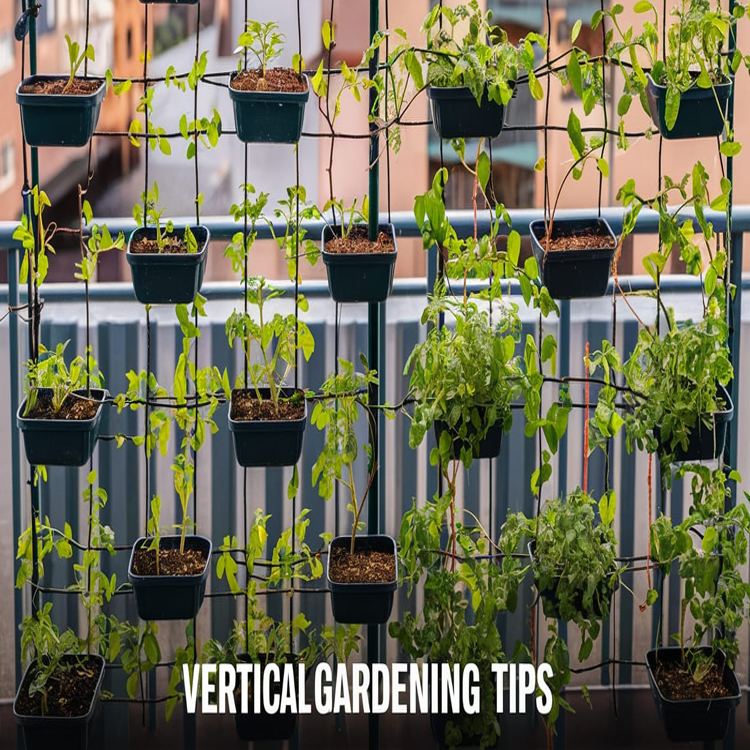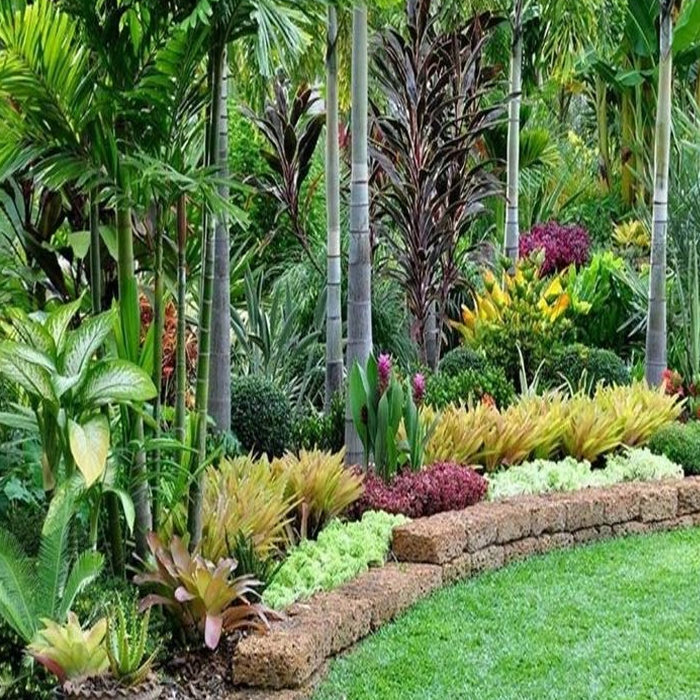In this modern era, green space is becoming increasingly rare in cities, considering the rapid development of infrastructure and the increase in the number of buildings. However, the desire to stay close to nature remains in many people, creating an urge to seek creative alternatives to overcome space limitations. Vertical gardens exist as an innovative solution that answers these needs. By utilizing walls or other vertical surfaces, the vertical garden concept allows us to create a green oasis even in the most limited spaces, providing a touch of nature amidst the hustle and bustle of the city.

This article will take an in-depth look at vertical gardens, outlining their various benefits, from improving air quality to reducing temperatures around buildings. In addition, practical steps in creating a vertical garden will be explained, including choosing the right plants and efficient planting techniques. No less important, this article will also provide tips for caring for a vertical garden so that it remains fertile and beautiful all year round. In this way, readers will gain comprehensive knowledge that can be applied to bring the beauty and coolness of nature into their own homes, even with limited space.
What is a Vertical Garden?
Vertical gardens, also known as green walls or upright gardens, are a farming technique that utilizes vertical space to grow plants. This concept allows plants to grow on vertical structures, both on indoor and outdoor walls. Vertical gardens not only serve as decorative elements, but also provide various environmental and health benefits.
The history of vertical gardens can be traced back to the Hanging Gardens of Babylon, one of the Seven Wonders of the Ancient World. However, the modern concept of vertical gardens began to gain popularity in the 1980s thanks to the work of Patrick Blanc, a French botanist who developed a vertical garden system known as “mur végétal” or living walls.
Benefits of Vertical Gardens
Vertical gardens offer a number of advantages that make them an attractive option for many people, especially those who live in urban areas with limited space. Here are some of the main benefits of vertical gardens:
1. Maximizes Limited Space: The most obvious benefit of a vertical garden is its ability to convert unused vertical space into a productive green area. This is especially useful in small apartments, narrow balconies, or limited backyards.
2. Improve Air Quality: Plants in a vertical garden can help clean the air by absorbing pollutants and producing oxygen. This is especially beneficial in urban environments that often have poor air quality.
3. Thermal Insulation: Vertical gardens installed on exterior walls can act as natural insulation, helping to keep the temperature inside a building stable and potentially reducing energy costs.
4. Sound Dampening: Layers of plants in a vertical garden can help dampen noise, creating a quieter environment both indoors and outdoors.
5. Improves Aesthetics: Vertical gardens can be a stunning focal point in interior or exterior design, adding an attractive natural element to any space.
6. Psychological Benefits: The presence of plants has been shown to have a positive effect on mental health, reducing stress, and increasing productivity.
7. Food Production: Vertical gardens can be used to grow various types of vegetables, herbs, and even fruits, making fresh food production possible at home.
8. Biodiversity: In urban environments, vertical gardens can provide habitat for a variety of insects and birds, supporting local biodiversity.
Types of Vertical Gardens
There are several types of vertical gardens to choose from, depending on your needs, available space, and the level of care you can afford. Here are several popular styles of vertical gardens:
1. Modular System: Consists of modules or panels that can be connected to each other. Each module usually has pockets or containers for individual plants. This system is easy to install and can be adapted to any size space.
2. Felt (Fabric) System: Using a special waterproof fabric layer as a planting medium. Plants are grown directly on this fabric, which is then hung on a supporting structure. This system is lightweight and can create a very natural look.
3. Bag System: Similar to a modular system, but uses individual bags or hanging bags for each plant. It is a good choice for beginners because it is easy to set up and maintain.
4. Hydroponic System: Uses nutrient-rich water to grow plants without soil. These systems can be very efficient in water and nutrient use, but require more technical maintenance.
5. Trellis and Vines: Simple structures that allow vines to grow vertically. This is a good choice for climbing plants such as grapes or clematis.
6. Living Walls: More complex systems that can include automatic irrigation and drainage systems. Usually used for large-scale or commercial projects.
How to Make a Vertical Garden
Designing a vertical garden can be an enjoyable and fulfilling endeavor. Here are the general steps for creating a simple vertical garden:
1. Choose a Location: Decide where you want to place your vertical garden. Consider factors such as sun exposure, humidity, and accessibility for care.
2. Choose a System: Based on your location and needs, choose the type of vertical garden system you want to use. For beginners, a simple pouch or modular system can be a good choice.
3. Prepare Supporting Structures: Make sure you have walls or structures strong enough to support the weight of the vertical garden. If necessary, install support frames or panels.
4. Install a Drainage System: This is important to prevent excess water from damaging the walls or floors. You can use a tray or channel at the bottom of the garden to collect flowing water.
5. Choose Plants: Choose plants that suit the conditions in your vertical garden location. Consider factors such as light, water and growing space requirements.
6. Plant: Begin planting your plants into the system you have prepared. Be sure to follow the appropriate planting instructions for each type of plant.
7. Set Up an Irrigation System: Depending on the type of system you use, you may need to set up an automatic or manual irrigation system.
8. Care for and Monitor: Regularly check your plants for signs of disease or pests, and make sure they are getting enough water and nutrients.
Vertical Garden Care
Proper care is essential to keeping your vertical garden healthy and beautiful. Here are some care tips:
1. Watering: Make sure your plants get enough water, but avoid overwatering which can cause root rot. Watering frequency will depend on the type of plant and environmental conditions.
2. Fertilize: Fertilize regularly to ensure your plants get enough nutrients. Use diluted liquid fertilizer to make application easier.
3. Pruning: Prune plants regularly to maintain their shape and prevent overgrown growth. It also helps stimulate new growth.
4. Pest Control: Check your plants regularly for signs of pests or disease. If found, treat immediately with appropriate methods.
5. Plant Rotation: If possible, rotate the position of your plants periodically to ensure all plants get enough light.
6. Cleaning: Clean dead or fallen leaves regularly to maintain the appearance of the garden and prevent the spread of disease.
7. Check Systems: Periodically check support, drainage, and irrigation systems to ensure they are functioning properly.
Vertical gardens offer a creative and effective solution for maximizing limited space in urban environments. With a variety of benefits on offer, from improving air quality to aesthetic value, vertical gardens are an attractive option for many people. While there are challenges to creating and maintaining, with careful planning and proper care, a vertical garden can be a valuable addition to any space, both indoors and outdoors.
As we continue to look for ways to green our environment and get closer to nature, vertical gardens will continue to develop and innovate. Whether you live in a small apartment or have limited outdoor space, a vertical garden provides the opportunity to create your own green oasis. By understanding the basic principles and tips discussed in this article, you are ready to begin your journey in the wonderful world of vertical gardens.



